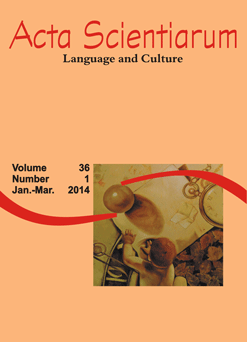<b>The figure with recurrent presence: the defiant hero in Nigerian narratives<b>
Abstract
Nigerian narratives always reveal corruption, disillusionment, mythological entities, political instability, cultural backgrounds and traditions of the tribes and nations used as context. Textual resources advertise literary works as realistic. In general, the recurring presence of the characters in these narratives is almost ignored. Unlike earlier interpretations of the Nigerian narratives, this essay is based on the theory of Frye’s five mimetic modes or categories. Based on the analysis of The Interpreters (SOYINKA, 1972) and The Famished Road (OKRI, 1992), this article examines the defiant hero as a recurring presence in Nigerian narratives. In fact, the hero is a character of resistance, which, in many ways, is in conflict with the laws made unbearable for others. The article also shows how the character, revealed by the constant manifestations of the structure of the primary activities of the hero of narratives such as myths, gradually and systematically hides in later narratives of mimetic modes through the emergence and influence of realist art. Similar processes in which the hero is involved are abundant in many Nigerian narratives. The insights revealed by these discussions serve to rethink previous critical views on these texts.
Downloads
DECLARATION OF ORIGINALITY AND COPYRIGHTS
I Declare that current article is original and has not been submitted for publication, in part or in whole, to any other national or international journal.
The copyrights belong exclusively to the authors. Published content is licensed under Creative Commons Attribution 4.0 (CC BY 4.0) guidelines, which allows sharing (copy and distribution of the material in any medium or format) and adaptation (remix, transform, and build upon the material) for any purpose, even commercially, under the terms of attribution.
Read this link for further information on how to use CC BY 4.0 properly.




















6.png)









